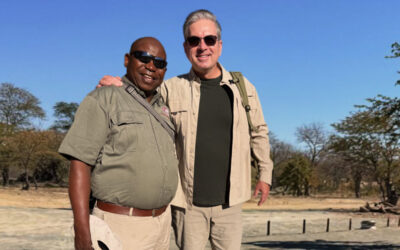Is it just me, or does this summer feel a little … off?
Between trying to find healthy ways to occupy kids (less screen time, more sunlight!), absorbing the unrelenting political discord, and worrying over the economic uncertainty that has many business leaders on edge, almost everyone I talk to seems to be navigating some level of unease. It’s as if the world is spinning a bit faster—and we’re all trying to regain our footing.
What do we do when fear, ambiguity, or a creeping malaise starts to chip away at our well-being? How do we shift from feeling “off” to being fully “on” as leaders, even when the world around us feels unstable? And how can we support the people we lead—who are often facing the same emotional undercurrents?
One powerful way is to reconnect to our values. In a noisy, distracted world, values-centered leadership isn’t just a nice-to-have—it’s a lifeline. When we root ourselves in what truly matters, we regain clarity, build resilience, and model steadiness for those around us.
In service to feeling more grounded and steadier, here’s a simple exercise called Peaks and Valleys to help you reconnect with your values and start leading from that grounded, centered place in your day-to-day work.
Step One:
Think of a time in your life that felt most vital and connected for you. This can be a single moment or event or a slightly longer experience or chapter. Regardless, you identify it as a peak time in your life when you reflect on it now. You remember a strong sense of vitality, connection, and fulfillment.
Step Two:
Ask yourself the following questions:
- Where was I?
- Who was I with?
- When did this happen?
- And, most importantly, what values was I honoring in that moment? What was important to me at that time that I was championing?
- Be specific in naming the value(s) here. For example, perhaps you’re thinking of a time when you traveled to a new place and made friends within that community. Rather than naming your value as travel, you might instead say that you value the exposure and education that comes with traveling as well as a strong sense of connection that comes from becoming a part of a community.
Step Three:
Write down the values that come to mind. Don’t just let them float around in your head. Don’t just make the mental note. And perhaps don’t use a keyboard. Literally, write them down and begin your list.
Step Four:
Shift gears to your valleys now. Think of a time in your life that felt most disconnected and dissonant for you. Just like before, this can be a single moment or event or a slightly longer experience or chapter. Regardless, you identify it as a low time in your life when you reflect on it now. You remember a strong sense of dissatisfaction and disillusionment.
Step Five:
Ask yourself the same questions as before, save for the last:
- Where was I?
- Who was I with?
- When did this happen?
- What values of mine were being ignored in that moment? What was important to me that I or someone else wasn’t honoring but was instead dismissing or even violating?
- Again, be specific in naming the value here. For example, you may remember a time when you confided in a colleague your ideas regarding a new strategy for a particular product or service line, only to have that colleague present your ideas as their own to stakeholders. In thinking about this experience, you might name trust, integrity, and transparency as values that were important to you but were dismissed by your colleague.
Step Six:
Write down the values that come to mind. Add them to the list you started while doing the “Peaks” portion of the exercise.
Last Step:
Look at the list of values you derived from your peaks and valleys. Look at it closely. Like, really closely. Then, for each one, identify a specific action step you can take to champion that value in your life, professionally or personally, right now. In some cases, it may mean stopping a particular mindset and behavior. In others, it might mean upholding a status quo that is working well for you. In still more, it may call for a new mindset and behaviors to take afoot. Regardless, you’re honoring what is important to you now, and doing so will help you focus on what you can control and how you can stay grounded.
A Final Seafaring Thought
Identifying and actioning our values gives us our sea legs. This means that however turbulent the water around us may be, whether the seas are calm and serene or we’re staring at ten-foot swells, our legs are sturdy, stable, and secure. This is to say that we’re in control of ourselves, undeterred by volatile forecasts or external forces—many of which are outside of our control—and how they may try to influence us. Instead, we keep our hands on our ship’s wheel and use our values as a compass to guide our decision-making. In doing so, we find clearer passage to harbors of our choosing and lead the way for those we look to help protect, grow, and inspire.
Read Next
8 Leadership Lessons from an African Safari Guide
Earlier this year, I embarked on a life-changing 15-day African safari with my...
Leadership Lessons from Selling Dion Leadership
On July 31, 2025, Dion Leadership was acquired by Gallagher. We are thrilled to be...




